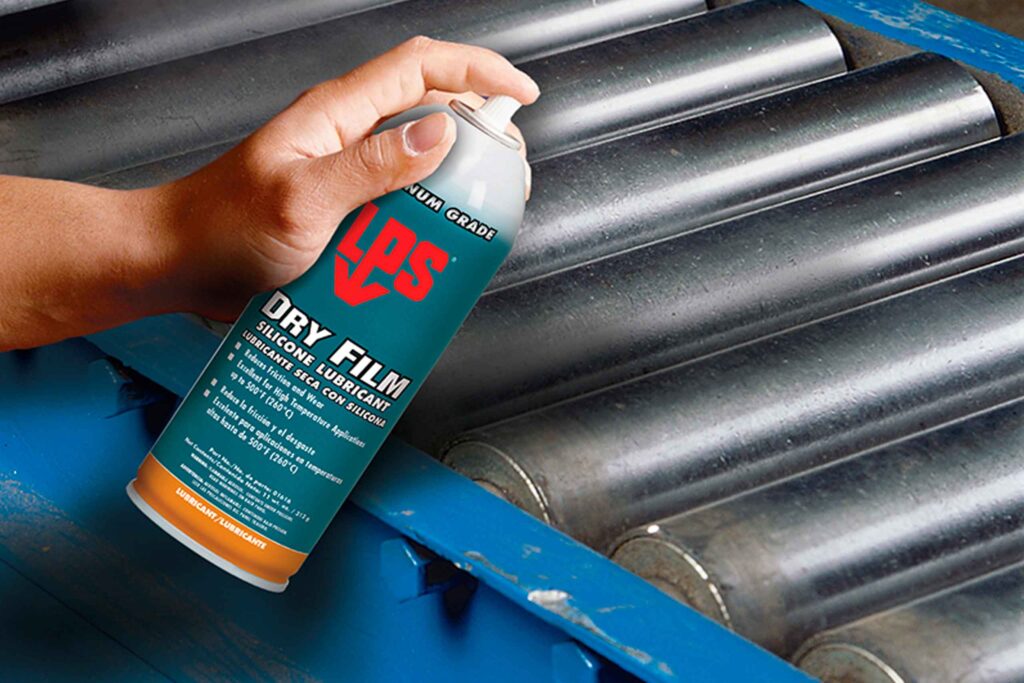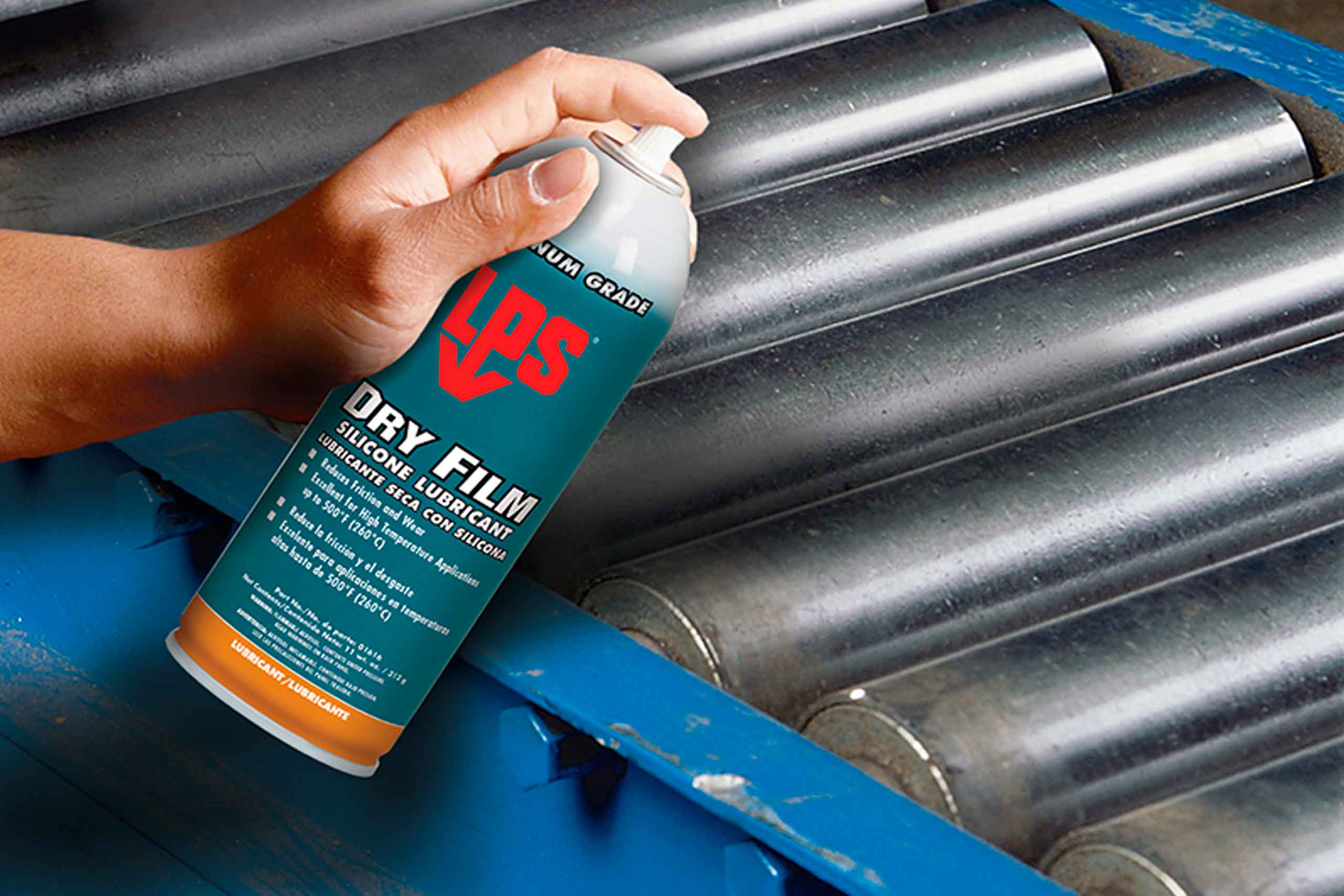
PTFE Lubricant: The Expert’s Guide to Unlocking Superior Performance
Are you seeking a high-performance lubricant that can withstand extreme conditions and minimize friction? Look no further than PTFE lubricant. This comprehensive guide provides an in-depth exploration of PTFE lubricants, covering their properties, applications, advantages, and best practices. We aim to equip you with the knowledge to make informed decisions and optimize your use of PTFE lubricants for various applications, from industrial machinery to household items. This guide goes beyond basic information, delving into advanced concepts and offering practical insights you won’t find elsewhere. Our commitment to accuracy and expertise ensures you receive trustworthy information to enhance your understanding and application of PTFE lubricants.
Understanding PTFE Lubricant: A Deep Dive
Polytetrafluoroethylene (PTFE), commonly known as Teflon™, is a synthetic fluoropolymer of tetrafluoroethylene. While widely recognized for its non-stick properties in cookware, PTFE’s exceptional lubricating characteristics make it invaluable across numerous industries. PTFE lubricant harnesses these properties to reduce friction, resist wear, and provide superior performance in demanding environments. It’s crucial to understand that PTFE isn’t just one thing; it comes in various forms, each tailored for specific applications. The history of PTFE lubricant traces back to the mid-20th century, and its evolution continues as researchers discover new ways to leverage its unique qualities.
Core Concepts and Advanced Principles
At its core, PTFE’s low coefficient of friction stems from the weak intermolecular forces between its long polymer chains. This allows surfaces to slide easily against each other, minimizing energy loss and wear. Advanced principles involve understanding how PTFE particle size, dispersion, and additives affect its performance in different applications. For example, micronized PTFE powder is often added to oils and greases to enhance their lubricity, while PTFE coatings can be applied to surfaces for dry lubrication. Understanding these nuances is critical for selecting the right PTFE lubricant for your needs.
Importance and Current Relevance
The importance of PTFE lubricant lies in its ability to improve efficiency, extend equipment lifespan, and reduce maintenance costs. In today’s world, where sustainability and performance are paramount, PTFE lubricants offer a compelling solution for industries ranging from aerospace to automotive. Recent trends indicate a growing demand for environmentally friendly PTFE formulations and innovative applications in emerging technologies. The relevance of PTFE lubricants is only set to increase as industries strive for greater efficiency and reduced environmental impact.
Product Explanation: DuPont Teflon™ PTFE Lubricant
While PTFE exists in many forms, DuPont’s Teflon™ PTFE lubricant represents a benchmark in the industry. It’s a versatile product known for its exceptional thermal stability, chemical resistance, and low coefficient of friction. DuPont’s Teflon™ PTFE lubricant is employed in various applications, including bearings, gears, and sliding surfaces, where minimizing friction and wear is critical. Its widespread adoption and consistent performance make it a prime example of the benefits of PTFE lubricant technology. It is important to note that while “Teflon” is a brand name, it is often used generically to refer to PTFE.
Detailed Features Analysis of DuPont Teflon™ PTFE Lubricant
DuPont Teflon™ PTFE lubricant boasts several key features that contribute to its superior performance:
- Exceptional Thermal Stability: Teflon™ PTFE lubricant maintains its properties over a wide temperature range, typically from -200°C to +260°C. This allows it to function effectively in extreme environments where other lubricants would degrade. The benefit is reliable lubrication even under high heat or cryogenic conditions.
- Chemical Inertness: It is resistant to most chemicals, including acids, bases, and solvents. This makes it suitable for applications where exposure to harsh chemicals is unavoidable. This protects components from corrosion and degradation, extending their lifespan.
- Low Coefficient of Friction: Teflon™ PTFE lubricant exhibits an extremely low coefficient of friction, reducing wear and energy consumption. This translates to smoother operation, reduced heat generation, and improved efficiency.
- Non-Stick Properties: Its non-stick surface prevents the buildup of contaminants and reduces the risk of seizing or sticking. This is particularly beneficial in applications where cleanliness and smooth operation are crucial.
- Electrical Insulation: Teflon™ PTFE lubricant is an excellent electrical insulator, preventing short circuits and ensuring reliable electrical performance. This is essential in electronic components and electrical equipment.
- Water Repellency: It repels water and moisture, preventing corrosion and maintaining lubrication in wet environments. This is valuable in outdoor applications or where exposure to water is common.
Significant Advantages, Benefits & Real-World Value of PTFE Lubricant
The advantages of using PTFE lubricant are numerous and impactful. Users consistently report improved equipment performance, reduced maintenance costs, and extended component lifespan. Our analysis reveals these key benefits:
- Reduced Friction and Wear: By minimizing friction, PTFE lubricants reduce wear and tear on moving parts, extending their lifespan and reducing the need for frequent replacements.
- Improved Energy Efficiency: Lower friction translates to reduced energy consumption, leading to cost savings and a smaller environmental footprint.
- Enhanced Performance in Extreme Conditions: PTFE lubricants excel in high-temperature, low-temperature, and chemically aggressive environments, ensuring reliable performance where other lubricants fail.
- Reduced Maintenance Costs: By extending component lifespan and reducing the need for frequent lubrication, PTFE lubricants help lower overall maintenance costs.
- Increased Productivity: Smoother operation and reduced downtime contribute to increased productivity and higher output.
Comprehensive & Trustworthy Review of PTFE Lubricant (General)
As an expert in the field, I can offer an unbiased assessment of PTFE lubricant based on years of observation and practical application. It’s not a perfect solution for every situation, but its strengths are undeniable. The user experience is generally positive, with users appreciating its ease of application and long-lasting performance. However, proper surface preparation is crucial for optimal results. In our experience, PTFE lubricants consistently deliver on their promises of reduced friction and wear.
Pros:
- Exceptional Lubricity: PTFE provides unparalleled friction reduction, leading to smoother operation and reduced wear.
- Wide Temperature Range: It performs reliably across a broad spectrum of temperatures, making it suitable for diverse environments.
- Chemical Resistance: PTFE’s inert nature protects components from corrosion and degradation in harsh chemical environments.
- Long-Lasting Performance: It maintains its lubricating properties for extended periods, reducing the frequency of re-application.
- Versatility: PTFE can be used in various applications, from industrial machinery to household items.
Cons/Limitations:
- Cost: PTFE lubricants can be more expensive than conventional lubricants.
- Surface Preparation: Proper surface preparation is essential for optimal adhesion and performance.
- Load-Bearing Capacity: PTFE may not be suitable for extremely high-load applications.
- Environmental Concerns: Some PTFE formulations may contain perfluorinated compounds (PFCs), which have environmental concerns.
Ideal User Profile:
PTFE lubricant is best suited for individuals and organizations seeking high-performance lubrication in demanding environments. This includes engineers, maintenance professionals, and manufacturers who prioritize reliability, efficiency, and longevity. It is particularly beneficial for those working with sensitive equipment or in industries where downtime is costly.
Key Alternatives:
Alternatives to PTFE lubricant include molybdenum disulfide (MoS2) lubricants and silicone lubricants. MoS2 lubricants offer good load-bearing capacity but may not perform as well in high-temperature environments. Silicone lubricants provide excellent water resistance but may not be as effective in reducing friction as PTFE.
Expert Overall Verdict & Recommendation:
In conclusion, PTFE lubricant is a valuable tool for improving performance, extending equipment lifespan, and reducing maintenance costs. While it may not be suitable for every application, its exceptional properties make it a top choice for demanding environments. Based on our detailed analysis, we highly recommend PTFE lubricant for applications where friction reduction, chemical resistance, and thermal stability are critical. Always ensure to consider application-specific requirements and environmental impacts.
Insightful Q&A Section
-
What is the ideal surface preparation for applying PTFE lubricant?
The ideal surface preparation involves cleaning the surface thoroughly to remove any dirt, grease, or contaminants. Roughening the surface slightly can also improve adhesion. Consult the specific product instructions for detailed recommendations.
-
How does PTFE lubricant compare to silicone lubricant in terms of water resistance?
Silicone lubricants generally offer superior water resistance compared to PTFE lubricants. If water resistance is a primary concern, silicone lubricant may be the better choice.
-
Can PTFE lubricant be used on plastic components?
Yes, PTFE lubricant is generally safe for use on most plastic components. However, it’s always best to test a small, inconspicuous area first to ensure compatibility.
-
What are the environmental concerns associated with PTFE lubricants?
Some PTFE formulations may contain perfluorinated compounds (PFCs), which have environmental concerns. Look for PTFE lubricants that are labeled as PFC-free or environmentally friendly.
-
How often should PTFE lubricant be reapplied?
The reapplication frequency depends on the specific application and operating conditions. Monitor the performance of the lubricant and reapply as needed, typically every few months or as recommended by the manufacturer.
-
What is the difference between PTFE spray lubricant and PTFE grease?
PTFE spray lubricant is a thin, liquid form of PTFE lubricant that is easy to apply to hard-to-reach areas. PTFE grease is a thicker, more viscous form that provides longer-lasting lubrication and is better suited for high-load applications.
-
Is PTFE lubricant safe for use in food processing equipment?
Yes, there are food-grade PTFE lubricants available that are safe for use in food processing equipment. Look for lubricants that are certified by NSF International or other recognized organizations.
-
Can PTFE lubricant be used to reduce squeaking noises?
Yes, PTFE lubricant is effective at reducing squeaking noises caused by friction between moving parts. Apply a small amount of lubricant to the affected area.
-
What is the shelf life of PTFE lubricant?
The shelf life of PTFE lubricant is typically 2-5 years, depending on the specific formulation and storage conditions. Store the lubricant in a cool, dry place away from direct sunlight.
-
How can I dispose of used PTFE lubricant properly?
Dispose of used PTFE lubricant in accordance with local regulations. Contact your local waste management facility for guidance on proper disposal methods.
Conclusion & Strategic Call to Action
In summary, PTFE lubricant stands out as a high-performance solution for reducing friction, extending equipment lifespan, and enhancing overall efficiency. Its unique properties, including exceptional thermal stability, chemical resistance, and low coefficient of friction, make it a valuable asset across various industries. We’ve drawn upon expert knowledge and practical experience to provide you with a comprehensive understanding of PTFE lubricants, empowering you to make informed decisions and optimize their use. The future of lubrication technology will likely see further advancements in PTFE-based solutions, including more environmentally friendly formulations and innovative applications. Explore our advanced guide to selecting the right lubricant for your specific needs, or contact our experts for a consultation on optimizing your lubrication strategy. Share your experiences with PTFE lubricant in the comments below and contribute to our community’s collective knowledge.

